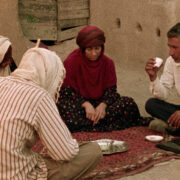The Beginner’s Guide: Gareth Evans, Director

Alex is a 28 year-old West Australian who has a…
Delivering a much-needed scissor kick to action cinema, Gareth Evans is a director who already has had a major influence in mainstream action filmmaking. Born in Wales, he graduated from the University of South Wales with a Master of Arts in screenwriting. With this knowledge in tow, he directed the independently-budgeted kitchen sink-noir film Footsteps, which didn’t lead to much work.
Through a connection of his wife, Evans was given a chance to direct a documentary on the martial art of Pencak Silat in Indonesia, a fighting style usually not seen in mainstream cinema and usually portrayed with an exaggerated element of supernatural abilities. Whilst there, Evans became instantly interested in the style and met future star Iko Uwais, a humble man who was highly regarded among his colleagues for his sublime martial arts skills.
Between Evans and producer Ario Sagantoro, they were keen in showing Pencack Silat in a proper way to a wide audience, with Iko being Indonesia’s answer to Hong Kong’s Bruce Lee.
Film Number 2: Merantau (1999)
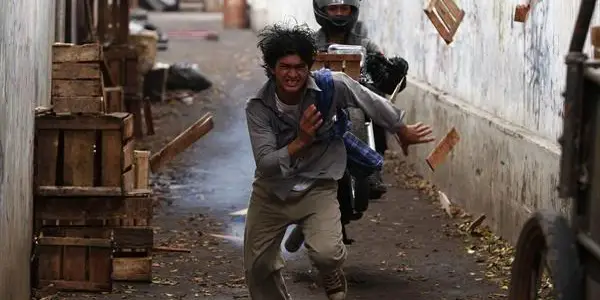
The film they made was Merantau, a thoughtful and action-packed film which chronicled the adventures of Yuda (Iko Uwais), a Minangkabau citizen from West Sumatra who must undertake the tradition of ‘Merantau’, which entails journeying away from his home village and exploring the outside world.
Through a series of circumstances, Yuda becomes entangled in a dangerous underworld where he must fight to survive and save an orphaned girl along with her younger brother. The film showcased Evans’ ability to craft action scenes with a sense of plot importance and a refreshing style which actually showed off the martial arts rather then editing around them.
Merantau has all the elements of Evans’ films which make them so great; Evan’s editing style, creative use of environments, his brave cinematographer Matt Flannery, Iko Uwais‘ awesome martial arts abilities and Yayan Ruhian’s terrific choreography and Silat skills.
Film Number 3: The Raid: Redemption (2011)
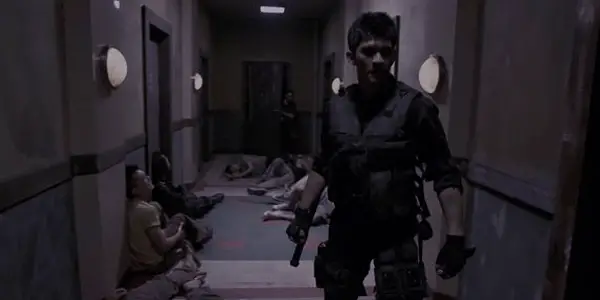
Now that Merantau had demonstrated his directing chops, Evans decided to shoot an ambitious gangster film that he’d written, Berandal, an epic yakuza film filled with martial arts, warring gangs, various expansive action set pieces which include car chases and multi-room fight sequences. Labelled as too expensive, Evans’ budget was cut considerably over time, which forced him to use the rules of old-school filmmaking: strip down all the elements and build with what you have.
Starting from the idea of keeping the action in one location to keep costs down, Evans’ built the idea from there. A martial arts siege film (inspired by John Carpenter’s Assault on Precinct 13) that would use video game logic and kung-fu aesthetics, mixed in with Sam Peckinpah levels of gunplay and a classic police corruption plot line to keep the film ticking along.
That film would become the international hit, The Raid. Rather simplistic in theory but executed perfectly, The Raid has become the go-to film when describing melee combat, martial arts and action cinema in general, much like how Pulp Fiction became the go-to movie when talking about any future crime films and Paranormal Activity for any new horror films.
Keeping the same key players from Merantau, The Raid tells the story of Rama (Iko Uwais), a rookie Indonesian SWAT officer who joins a 20-man elite police squad, in a covert mission to raid an apartment block in the Jarakta slums to arrest Tama Riyadi, a notorious drug lord who lives at the top level of the building. The mission goes well until a child in the building alerts the building’s heavy security, who trap the team inside the building, forcing the survivors to battle their way to the top in an attempt to get out.
One easy reason to point out the answer for The Raid’s success is in its simplicity. By simply taking away any excessive elements – romantic subplots, convoluted storytelling, indulgent monologues or any pretentious cinematography – the great points of the film are highlighted much more clearly. Audiences have shown repeatedly that in a sea of films attempting to load themselves with as much story and character in an attempt to seem grandiose and well-made, that sometimes they just want basic genre elements done well.
The success of John Wick, Furious 7 and Mad Max: Fury Road show us that audience will always flock to see action, if it’s well-made and uses the action tropes in a creative fashion. Other genres that highlight this trend include The Conjuring, simple atmospheric horror done right and This is the End showed us that having comedic people together actually being funny, people will respond positively.
UK Film critic Mark Kermode, after watching the film, noted the similarities between the film genres of martial arts and musicals. Both use highly choreographed sequences as their main set pieces, using rhythmic methods to engage their audiences. This point gets to the heart of why The Raid works so well – the action sequences are all incredibly well choreographed and equally shot just as well, never letting the filmmaking act as a poor editing tool.
An example of using the camera as a poor editing tool is Taken 3, which shakes the camera in an uncontrollable fashion from different angles mixed with blown-out sound effects, making the audience think the action on screen is dramatic when not much is happening at all. Evans‘ clean, long action takes allow the audience to witness what is happening on-screen, making all the martial arts displays so much more impressive.
Like musical numbers in cinema, the scenes feature an understated rhythm which give energy to the scenes, featuring the highs and lows of ranges which would be commonly seen in any regular belt-out musical number. Outside of the this, the film features confident direction by Evans, a thumping propelling soundtrack and an array of interesting characters, with not one dodgy performance in the lot.
V/H/S/2 (2013): Safe Haven Segment
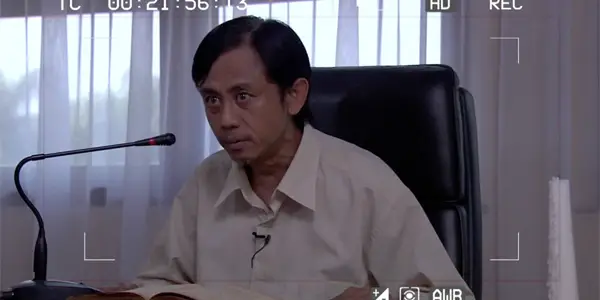
Between The Raid and The Raid 2, Evans and collaborator/friend Indonesian horror director Timo Tjahjanto were both approached separately to direct a segment each for V/H/S/2, the sequel to V/H/S, a POV Horror anthology film which was currently enjoying heavy buzz from its Sundance festival premiere. They decided to team up due to Evans’ skillful action directing abilities and Tjahjanto’s horror experience, to direct the segment ‘Safe Haven‘.
Inspired by Tjahjanto’s ambition to make a film inspired by the Jonestown massacre, the directors bounced a couple of ideas, toying with the idea of a cult whose crazy predictions were actually correct. The POV is from an investigative Indonesian news team (Fachry Albar, Hannah Al Rashid, Oka Antara and Andrew Suleiman) who decide to do a report on an Indonesian religious cult, lead by ‘Father’ (Epy Kusnandar, a frequent collaborator of both Tjahjanto and Evans), where midway through filming, witness the cult’s prophesied apocalypse go into action, which features a bizarre mix of zombies, gory deaths and the birth of the Antichrist. It is an action-packed and genuinely intense sequence and easily the best in the entire V/H/S trilogy.
Even when working with the restriction of POV (otherwise known as found footage) and a low budget, Evans and Tjahjanto manage to make a remarkable horror short, one which languishes in the gory action set pieces that would make old school Peter Jackson proud. Evans’ keen eye for gunplay and physical action is on display, alongside his use of practical effects when feasible.
The film’s crucial moment, when a huge winged demon is birthed (the Antichrist), is done with a mix of practical effects and subtle CGI. The creature itself, a large rubber suit, is a refreshing change in an old school direction in a cinematic landscape dominated by CGI creatures.
People often question why practical effects are always favoured, thinking it’s more of a nostalgic trait due to his increasing inconvenience in the face of cheaper, easier CGI replacements which are often used in mainstream films. Practical effects have a much more tactile real feeling, reminding the audience that these events, whilst still fake, really are happening in some sense, which increases audience engagement.
Mad Max Fury Road, Spectre and Mission Impossible Rogue Nation all display examples of practical effects having a comeback in cinema, brought by a wave of filmmakers who grew up watching practical action scene and wanting to emulate that. It’s this palpable element which really helps drive the action, the practicality of Evans’ filming style really translates to believability on-screen, which sets him apart from other current action directors.
Film Number 4: The Raid 2: Berandal (2014)
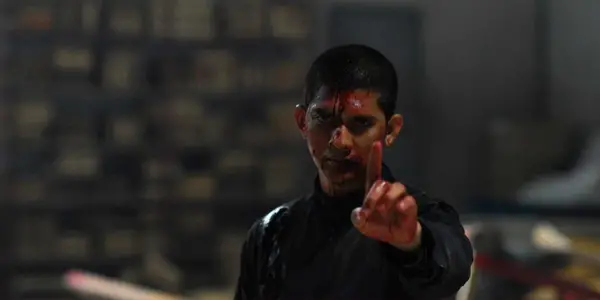
Working with a larger budget ($4.5 million compared to the first’s $1 million) allowed Evans to finally make his passion project, Berandal, reworking the script into a sequel for The Raid. Not much had to be changed, with the main character changing from an unknown orphan to Rama (Iko Uwais), who is placed undercover to infiltrate a tense gang war in order to secure the safety of his family after the events of the first film.
The Raid 2: Berandal (Berandal means thug in English) continues the story of Rama, who after surviving the events of the first film, is forced into going undercover as Yuda, in order to collect evidence on Bangun (Tio Pakusodewo), a respected Indonesian crime lord who currently runs the crime circuit in Jakarta. After going to prison and saving the life of Bangun’s son, Uco (Arifin Putra), Rama is forced to become part of Bangun’s gang to get the info he needs so Bunawar (Cok Simbara), the head of Jarakta’s anti-corruption task force, can finally take down Bangun and all the corrupt cops linked to him.
Bejo (Alex Abbad), a young powerful gangster, starts to pit Bangun against the Japanese crime family, the Goto family, who currently peacefully co-exist together. The war, triggered by Bejo’s manipulation of the impressionable Uco, leads to the crumbling of both families which in turn leads to Rama having to use his fighting skills once again to survive his crappy situation.
The Raid 2 expands on the first film in huge ways, from a huge cast of different characters, multiple locations and various action set pieces which does what a great sequel should do: build upon the original film whilst telling a different story and delivering new expansions based upon the pre-existing characters.
Some critics chastised the films for its long length (nearly 2 and a half hours) due to the film’s expansive story and extended action sequences, which, whilst could be a seen as a fair criticism of the film (a couple of subplots could’ve been dropped to tighten the film a bit) the film delivers on the action scenes so perfectly that it justifies its own length, staying consistently entertaining as Evans paces out the big action set pieces to make sure the audience never gets bored.
The Main Influences of Gareth Evans
To dissect the work of Gareth Evans, you must go through the many directors that have influenced his work and what filmmaking techniques in particular he has learned from their various movies and directing styles.
Bruce Lee
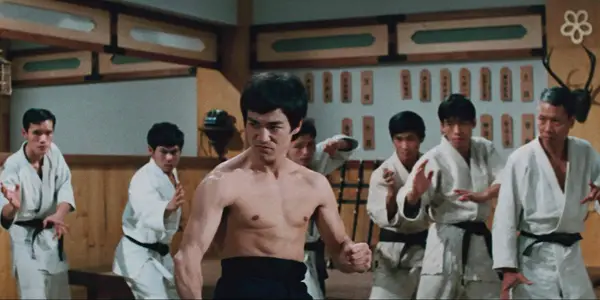
When talking about any martial arts films, it’s hard to understate the importance of the work of Bruce Lee, with only a few feature films such as Enter the Dragon and Fist of Fury, brought the genre into the mainstream arena and altered a lot of the genre’s main problems. Gone were the cheesy mystical elements (such as the use of magic) or the use of abstract wire-work and special effects, which all brought an inferior aesthetic to previous martial arts films. Bruce Lee himself provided the stunt work for all of his own films, adding a layer of realism and humanity in his performances, seen in his ability to show true emotion during fights and reacting organically to each situation.
His films attempted to touch on different social issues as well, such as class structures, racism and the effects of violence in society. Lee’s different approach to the genre and the mainstream success it garnered forced filmmakers to change their ways, with his influence being massively important not to martial arts cinema, but to action cinema itself.
His influence is evident in Evans works, seen in both The Raid films and Merantau, where a lone man (Iko Uwais), who is just trying to do the right thing, is pushed into fighting back by an oppressive force and transforms into an one man army who destroys his enemies with his advanced fighting skills. Iko Uwais demonstrates his acting ability thanks to Lee’s advancements, as performing Pencak Silat requires the fighters to show no emotion during fighting as a sign of strength, but each of his films (The Raid 1, 2 and Merantau) require Uwais to shift his training and display emotion on-screen to sell his character.
Sergio Leone
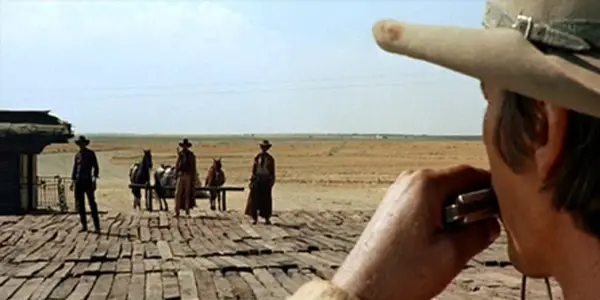
Sergio Leone, much like Bruce Lee, is a filmmaker whose influence is incredibly important to cinema and his impact is still being felt today. Quentin Tarantino is heavily influenced by Leone’s work, which is obvious when viewing his Spaghetti Western infused films.
Leone’s main filmmaking elements that most people know him for is his use of music, the way of building suspense towards character confrontations and his operatic cinematography. One defining characteristic of Leone’s use of music was his masterful use of Ennio Morriconne’s legendary soundtracks; a mix of vocal melodies, harmonicas and a unusual array of different guitars, which always gave life to the vibrant images on-screen. Even in his more subdued films, such as Once Upon A Time in America/The West, the soundtrack was still a very crucial factor in the building of his films.
Whilst Evans’ films don’t have the epic Spaghetti-Western soundtrack of Leone’s films, his use of music and knowing when to use it is obviously influenced by Leone’s work. The banging electronic soundtrack of The Raid kicks in not at the start of each action scene, but when the main characters are forced to fight back or are against a greater challenge. Another example of this is noticeable in The Raid 2 during the tense car chase sequence, when the rhythmic, drum-heavy music doesn’t kick in until halfway during the car chase, rather than from the start of the scene.
Whilst this may be a trivial point to address, but it’s important to notice subtle musical choices such as this. Music at the start of the scene is an easy indicator for audiences to tell them that an action scene is happening, with the music acting as an easy setup for the viewer to start getting hyped, as opposed to the action on-screen having that effect. Having the music cut in halfway through at the peak of the action just adds more flavour to each scene, kicking each action sequence into high gear when the audience is already heavily engaged due to the well-directed scenes.
This use of music really adds to Leone’s ability to create memorable character introductions and confrontations, making sure each important character is given proper and impressive cinematic introductions. The most famous example of this is Charles Bronson’s introduction in Once Upon A Time in The West, a tense train station-set shootout which sets up his silent but deadly protagonist in the most perfect way.
Evans emulates this style in both The Raid 1, 2 and in Merantau. Iko Uwais’ characters are given opening scenes which display the characters’ martial arts experience, letting the audience know that this character does have trained skills, making his martial arts abilities in the later action scenes not such a shock when being performed.
Sam Peckinpah
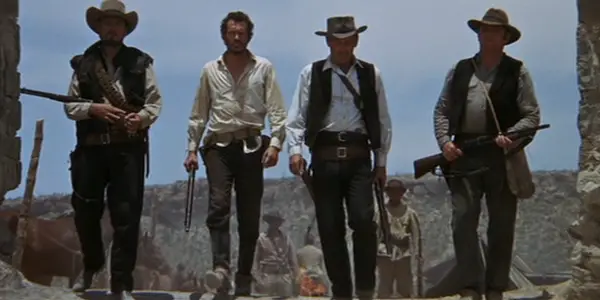
Sam Peckinpah, an important figure in action cinema due to his rapid-fire editing, heightened use of bloody violence and smart establishment of geography that makes the action scenes so coherent. Evans edits his own films, which gives his films a nice feeling of a director in total control – being the director and editor leads to many benefits.
Peckinpah is a director whose greatest films were filled with operatic, brutally visceral action sequences which, with the help of Arthur Penn’s revolutionary Bonnie and Clyde, pushed the boundaries of violence in American mainstream cinema to limits that allowed future filmmakers greater freedoms and different levels of experimentation. When Peckinpah was at the top of his game, his films, each a varied degree of the Western genre, were films where dialogue was kept to a minimum but bullets and blood soared high.
The Wild Bunch, Bring Me the Head of Alfredo Garcia, Ride the High Country and Straw Dogs are all brilliant Peckinpah films which show his prowess of directing great orchestrated on-screen violence. Peckinpah is a major influence on Gareth Evans, who models his action staging much similar to Peckinpah’s – making sure the audience is aware of the geography of the fight scene, which makes the fast, visceral action scenes easy to follow and adds some dimension to the events on-screen.
Peckinpah’s fast editing can be felt in Evan’s editing techniques, giving the fight scenes a quick rhythm, where action is cut at appropriate moments to accentuate different attacks, rather than chopping fight scenes up and raising the sound effects to trick the audience into thinking great violence is happening.
Takeshi Kitano
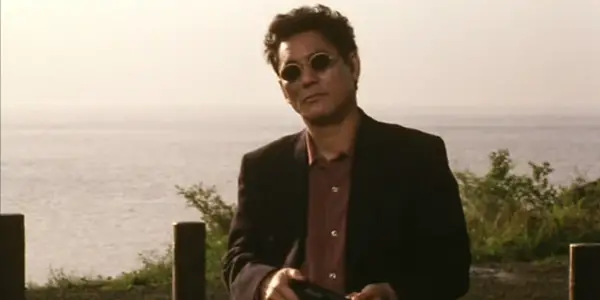
The influence of Takeshi Kitano’s subversive yazuka films is palpable in the aesthetics throughout Evans’ filmography, most notably in The Raid 2. Takeshi Kitano is a Japanese director whose comedic background seeps into his cynical crime dramas. His films are filled with gory violence blended with quiet artistic moments of poetry. They usually feature criminals stuck in monotonous lives with crazy events happening around them, with character interactions kept to non-verbal communications, making connections through violence or slight gesturing.
The Raid 2 features these static exchanges, where characters display their feelings not through long monologues, but through bursts of violence and intimidation, which gets the message across to both the audience and the characters involved. Kitano’s films feature characters who are given ugly exits: excessive deaths which kill off people in creative ways, much like all the antagonists in Sonatine, Hana-Bi and Violent Cop.
Both The Raid films feature characters who are given creative deaths, which act as punchlines for the end of the intense action scenes, which act as indicators of the film’s upbeat nature, never revelling in the relentless action happening on-screen. A great example of this is the outcome for the characters of Hammer Girl (Julie Estelle) and Baseball Bat Man (Very Tri Yulisman), who are given ironic deaths due to their choice of weaponry.
Jackie Chan & John Woo
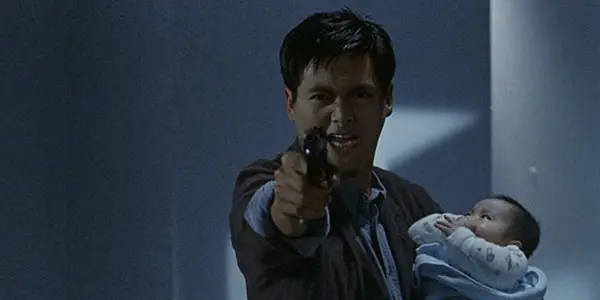
The two Hong Kong filmmakers that are the most important to Evans’ shooting are the action legends John Woo and Jackie Chan. Whilst they share some similarities, both have contributed to modern-day action cinema in their own significant ways. Both feature hyperbolic action set pieces, with inexhaustible men in inventive fight scenes that feature intelligent uses of the environment.
Jackie Chan, a definitive pop culture icon, is a man who earned his huge international fame. Like Bruce Lee, Chan was one martial artist who changed the general perception of what a martial arts could be, through some creative technical changes to his films. Chan always portrayed himself as a vulnerable fighter, who, in between his fights, was a man who could get hurt, setting himself apart from the indestructible killing machines that rampaged through other martial arts films.
His films are filled with comedy, giving his fight scenes comedic breaths in between the various blows. Mixing martial arts with a proper linear narrative that featured practical effects (Chan is a perfectionist, doing as many takes as possible to get the right shot) that allowed the main actors to show off their martial arts capabilities in a variety of different environments that were exploited for their geographical advantages.
One example is the fight scene underneath the train in Drunken Master 2 (The Legend of Drunken Master), which featured Chan fighting off an adversary underneath a stopped train. The unusual setting, mixed with Chan’s advanced fighting abilities and use of weaponry (a large rod) make for a memorable action sequence that doesn’t forget to include humour to alleviate the violence and remind the audience that it’s all in good fun.
These particular elements are all evident in both of the The Raid films. One choice example is the drug lab sequence in The Raid, which features the remaining three cast members fighting off a large group of henchmen within a drug lab, making use of the drug lab paraphernalia for weaponry and different platforms for the actors to fight on.
Even between all this, the characters act in an organic ways, pulling off awesome stunts but still getting themselves hurt, giving a level of humanity that makes the action more acceptable to audiences. John Woo uses these same practices, but instead of fists, he makes iconic uses of gunplay. Woo’s gunplay is seen in several scenes of The Raid 1 and 2, where the characters stick to guns initially until they are outnumbered and are forced to use their fists to get out of trouble. This harks back to Woo’s older Hong Kong action films such as Hard Boiled and The Killer.
What Now?
Gareth Evans is a director with a bright future ahead of him. With only four feature films under his belt (including his indie film Footsteps), he has made a considerable impact on the action film scene today. The Raid has already been labelled a classic, one of the go-to films when referring to great action cinema and making stars out of its main cast.
Iko Uwais and Yayan Ruhian have both appeared in quite a few different films now thanks to their exposure through The Raid, with the biggest (and coolest) one being their appearances in Star Wars: The Force Awakens, as a group of gangsters who threaten Han Solo (The Raid 2’s Cecep Arif Rahman also appears with them). Whilst they are completely wasted in the film (c’mon, we’d all love to see Pencak Silat vs Lightsabers), the fact that they have gained that much Western exposure due to one film is a testament to Evans’ strong filmography.
Evans’ is currently working on Blister, a UK-set gangster film, with no further details at the moment except that The Raid cast/crew will definitely be involved again which is a great sign. He had one project, The Night Comes For Us, a co-directing job with his V/H/S 2 collaborator Timo Tjahjanto and starring The Raid’s Joe Taslim, which just sounded awesome but sadly funding and production fell through (Tjahjanto has said that the story will be transformed into a graphic novel, which I hope to see).
The selling of the rights to remake The Raid garnered The Raid 2 more money for its budget, which has lead to multiple countries currently trying to remake it, with nothing definitive out at the time of writing. The American remake, which had Expendables 3 director Patrick Hughes and actor Taylor Kitsch attached to it, has recently fallen apart, which one can only hope means nothing comes of it (much like the planned Intouchables remake).
Between Gareth Evans, George Miller, David Leitch, Chad Stahelski, Brad Allan and more, it’s good to see action cinema in safe hands again. Whilst your friends may complain that cinema sucks now and all we see is sequels or remakes, it’s important to highlight the guys trying to do something different.
Are you a fan of Gareth Evans’ work? Would you like to see him make a Marvel film in the future?
Does content like this matter to you?
Become a Member and support film journalism. Unlock access to all of Film Inquiry`s great articles. Join a community of like-minded readers who are passionate about cinema - get access to our private members Network, give back to independent filmmakers, and more.










